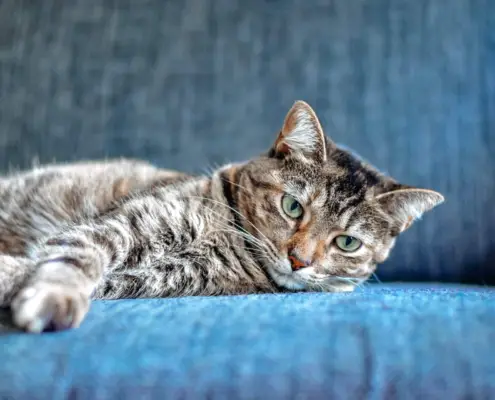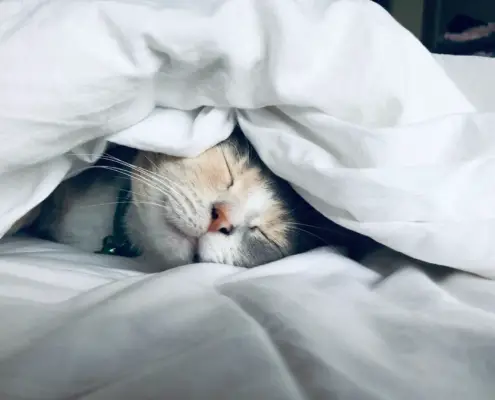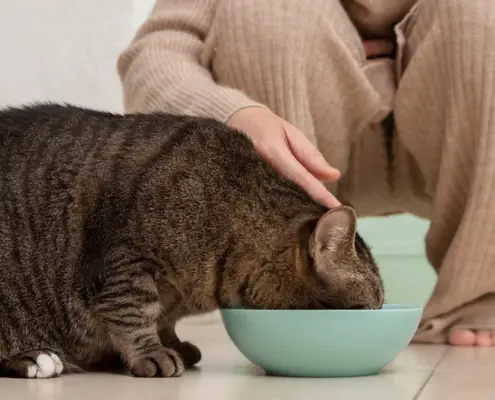
Cats are fascinating creatures, and witnessing the miracle of birth is an experience like no other. If you have a pregnant cat or are considering breeding your feline companion, it is essential to understand the stages of a cat pregnancy. This article will provide you with all the information you need to know about cat pregnancy, from the signs of pregnancy to caring for the mother cat and her newborn kittens.
Signs of pregnancy in cats
Detecting whether your cat is pregnant can be challenging, especially during the early stages. However, there are a few signs to look out for that may indicate that your cat is expecting. One of the most noticeable signs is a change in behavior. Pregnant cats often become more affectionate and seek extra attention from their owners. Additionally, a pregnant cat’s nipples may become larger and darker in color. Your cat may also experience morning sickness and exhibit a decreased appetite. If you notice any of these signs, it is advisable to consult with your veterinarian to confirm the pregnancy.
The stages of cat pregnancy
Cat pregnancy can be divided into five distinct stages, each with its own set of developments and milestones. Understanding these stages will help you monitor your cat’s progress and ensure her health and well-being throughout the entire pregnancy.
First stage: Fertilization and implantation
The first stage of cat pregnancy begins with fertilization and implantation. After successfully mating, the male cat’s sperm fertilizes the female cat’s eggs, leading to the formation of embryos. These embryos then travel to the uterus and implant themselves into the uterine lining. This stage usually lasts for around 2-3 weeks, during which time the cat may not exhibit any noticeable physical changes.
Second stage: Early pregnancy signs and symptoms
During the second stage of cat pregnancy, which typically lasts for 3-4 weeks, you may start noticing physical changes in your cat. Her belly may become slightly swollen, and her nipples may enlarge further. Your cat may also experience a decrease in appetite and may show signs of morning sickness. It is crucial to provide your cat with proper nutrition and ensure she remains hydrated during this stage.
Third stage: Mid-pregnancy development
The third stage of cat pregnancy marks the midpoint of the gestation period, which is around 4-5 weeks. At this stage, the kittens’ development begins to accelerate rapidly. Your cat’s belly will continue to grow, and you may be able to feel the kittens moving inside her. It is essential to provide your cat with a comfortable and quiet space where she can rest undisturbed.
Fourth stage: Late pregnancy and preparing for birth
As your cat enters the fourth stage of pregnancy, which typically occurs around 6-7 weeks, her belly will become significantly larger. You may notice her nesting behavior, where she seeks out a comfortable and secluded spot to give birth. It is crucial to create a safe and warm birthing environment for your cat, complete with a nesting box and clean bedding. Regular veterinary check-ups during this stage are essential to monitor the mother cat’s health and ensure everything is progressing as it should.
Fifth stage: Labor and delivery
The final stage of cat pregnancy is labor and delivery, which can occur around 8-9 weeks. Signs that your cat is going into labor include restlessness, pacing, and excessive grooming of the genital area. During labor, your cat may experience strong contractions, and each kitten will be born in its own amniotic sac. It is essential to provide support and reassurance to your cat during this time, but avoid interfering unless there are complications. If you notice any signs of distress or if the labor is prolonged without any progress, contact your veterinarian immediately.
Post-pregnancy care for the mother cat
After giving birth, your mother cat will need some time to recover and bond with her kittens. It is crucial to provide her with a quiet and stress-free environment where she can nurse her newborns. Make sure to provide her with a well-balanced and nutritious diet to support her milk production. Regular veterinary check-ups should continue to ensure the mother cat’s health and monitor the kittens’ progress.
Caring for the newborn kittens
Newborn kittens are incredibly delicate and require special care to thrive. They are born blind and deaf, relying solely on their mother for warmth, nourishment, and grooming. It is crucial to provide a warm and clean nesting area for the kittens, away from drafts and disturbances. Monitor their weight gain and ensure they are nursing regularly. If you notice any signs of illness or if a kitten is not gaining weight, consult with your veterinarian immediately.
Common issues during cat pregnancy and how to handle them
While cat pregnancies are generally smooth, there are some common issues that can arise. One of the most common is eclampsia, also known as milk fever, which occurs when the mother cat’s calcium levels drop drastically. This can lead to muscle tremors, seizures, and even death if left untreated. Another issue is a prolonged labor, which may require veterinary intervention. It is essential to be aware of these potential complications and seek veterinary assistance if necessary.
Conclusion
Understanding the stages of a cat pregnancy is crucial for ensuring the health and well-being of both the mother cat and her kittens. From the early signs of pregnancy to the post-pregnancy care, every stage plays a vital role in the successful development and delivery of healthy kittens. By providing the proper care and support, you can witness the miracle of life unfold before your eyes. Remember, always consult with your veterinarian for personalized advice and guidance throughout the entire cat pregnancy journey.
If you have any questions or concerns about your cat’s pregnancy, consult with your veterinarian for expert guidance and support.
If you enjoyed my article, I would appreciate you sharing it with your network.

Sima Ndlebe
Sima writes for CatBuzz. He is interested in Cats, Health and Fitness, and Entrepreneurship.
Published: 16 November 2023
Related Articles
Disclaimer
The content found on CatBuzz.org is presented on an "as is" basis and is intended for general consumer information and education purposes only. Any utilization of this information is voluntary and solely at the user's own risk.
None of the articles or content should be regarded as, or used in place of, veterinary medical advice, diagnosis, or treatment. The information provided on the website is purely for educational and informational intentions and should not be considered a substitute for professional guidance from a veterinarian or other qualified expert. The articles are designed to inform consumers about veterinary healthcare and medical matters that may impact their cat's daily life. It should be noted that this website and its services do not constitute the practice of any form of veterinary medical advice, diagnosis, or treatment. CatBuzz.org explicitly disclaims any liability for any direct or indirect damages or losses that may arise from the use of or reliance on the information contained within the content.
Consumers must consult a veterinarian, veterinary specialist, or another qualified veterinary healthcare provider when seeking advice regarding their cat's health or medical conditions. It is important not to ignore, avoid, or postpone seeking medical advice from a veterinarian or other qualified veterinary healthcare provider solely based on information obtained from this website. If you believe that your cat may be experiencing a medical issue or condition, it is imperative to promptly contact a qualified veterinary healthcare professional.



